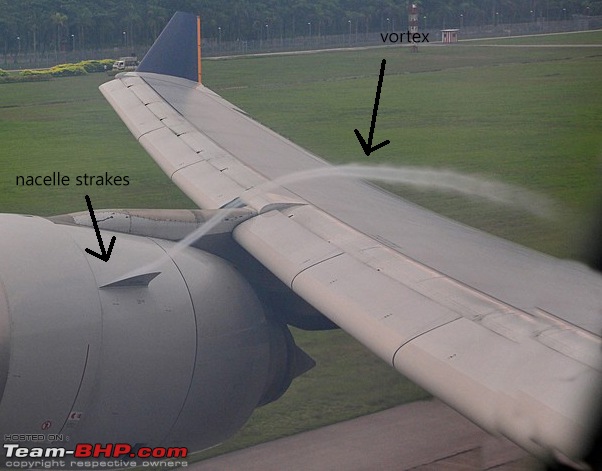Quote:
Originally Posted by vishy76  Can the autopilot land the aircraft in crosswinds or severe headwinds and tail winds?
Can it counteract winds with the help of the rudder like the pilots do and align the aircraft with the runway shortly after touchdown in a crosswind landing like this one?t |
Yes, the autoland system on the 777 is certified up to 25 kts. headwind, 25 kts. tailwind and 25 kts cross-wind. Please note that these automatic land crosswind limit of 25 kts only applies in Cat 2 or 3 conditions. You could in theory let the automatics cope with the tricky crosswind in Cat 1 or better.
Quote:
Originally Posted by IndiaSierra  I am specifically talking about Visual Approach and not any Instrumental like VOR,RNAV,NDB etc.My question stands that how do you align an aircraft in such a way that after touchdown the noose wheel exactly falls on the center line? Another question,in aircrafts where you do not have a camera on the nose wheel,how do you make the noose wheel stick to the taxiway centerline for optimum wingtip clearance during taxi? |
1. This is going to take some time. Stay tuned.
2. Taxiing an aircraft without a camera is not as difficult as it may seem. After a bit of practice, you will easily get it bang in the middle. Consider this synonymous to driving your car. You cannot see the wheels but if I asked you to place the wheel on a line/marker on the road, you would easily do it. How does that happen? Practice and spatial awareness.
Some operators also install strategically placed mirrors which will allow you to see the nose gear position.
Quote:
Originally Posted by norhog  1. During take off, when the plane rotates, and just lifts off the ground on most of airplanes in tropics between the engine pod and fuselage there is a fat band of white cloud or something formed flowing over the wing. What is that.?
2. On 777, 787 there is a, for lack of correct word, aleoron kind of thing, between flaps and aleoron, that moves very fast up and down and acts as a spoiler on the landing roll period. What is that?
3. There is a small winglets on the external surface of engine pod on the fuselage side, can be seen from the window seat, on a 777, 787. What is its function?
4. What is the power output of a 777 engine in kw and bhp?
5. Any pollution regulations for aircraft engines considering co2 is pumped in upper atmosphere.
Thank you in advance. |
Q 1 & 3.
The winglets/fins you are talking about are knows as NACELLE STRAKES/CHINES. Strakes help in increasing the stall angle of attack. The airflow from the engine nacelle affects the main flow over the wing, especially when flaps/slats are deployed. So, when strakes are installed, they act like vortex generators creating a thin layer of turbulence (vortex) over the surface of the nacelle. This vortex trails over the wing re-energizing the airflow and thus increasing the stall angle. Strakes are used if the nacelles are mounted closely under the wing of the aircraft.
The fat band of white cloud that you mentioned is the vortex generated by the nacelle strakes.
 Q No. 2
Q No. 2
These devices are known as speedbrakes or spoilers. They spoil the lift from the wings, which places the airplane weight on the main landing gear, providing excellent brake effectiveness. Normally, these spoiler/speedbrakes are armed and as soon as a touchdown is sensed by the weight on wheel sensor, these are extended automatically. In case it does not extend automatically on touchdown, we have to do it manually.
 Q No. 3
Q No. 3
An aircraft’s engines power is not measured in terms of bhp or kw. Thrust refers to the amount of pressure being created for use in forward motion of the aircraft. Therefore, it is expressed in units of pressure like kN or lbf. Horsepower is the total mechanical force being applied to an item i.e. a propeller for the creation of thrust. In basic terms; thrust is output, HP is input. Horsepower and thrust thus cannot be compared. Commercial jets engines work by accelerating a fluid to produce a thrust force, so it is most straightforward to rate these engines in terms of the size of that force. So they are rated directly in pressure units. Theoretically, you could calculate the horsepower generated at a given speed for a set thrust. But it would not be quite accurate.
But since you asked, I will give an estimated figure and calculattion for the 777.
Maximum takeoff thrust = 514 * 2 = 1028 kn.
Engine N1% at crusise speed and altitude = 75%
Thrust produced at this stage = .75 * 1028 = 771 kN
Horsepower = 771 * 253 m/s = 195063 bhp.
A propeller aircraft is designed to perform mechanical work that turns a shaft which is connected to a propeller. The engine itself doesn't produce the thrust, but it turns a propeller that does. So they are rated in terms of bhp. Note that two propeller aircrafts, having the same power output, say 4000 bhp, could produce different amounts if thrust if their propellers were different.
 (7)
Thanks
(7)
Thanks

 (1)
Thanks
(1)
Thanks

 (2)
Thanks
(2)
Thanks
 (2)
Thanks
(2)
Thanks

 (1)
Thanks
(1)
Thanks

 (1)
Thanks
(1)
Thanks










 .The sheer grace with which it moves still gives me goose bumps. Have been on an Emirates 777 from DXB to LIRA and was one of the most memorable flights back in 2004.
.The sheer grace with which it moves still gives me goose bumps. Have been on an Emirates 777 from DXB to LIRA and was one of the most memorable flights back in 2004.
